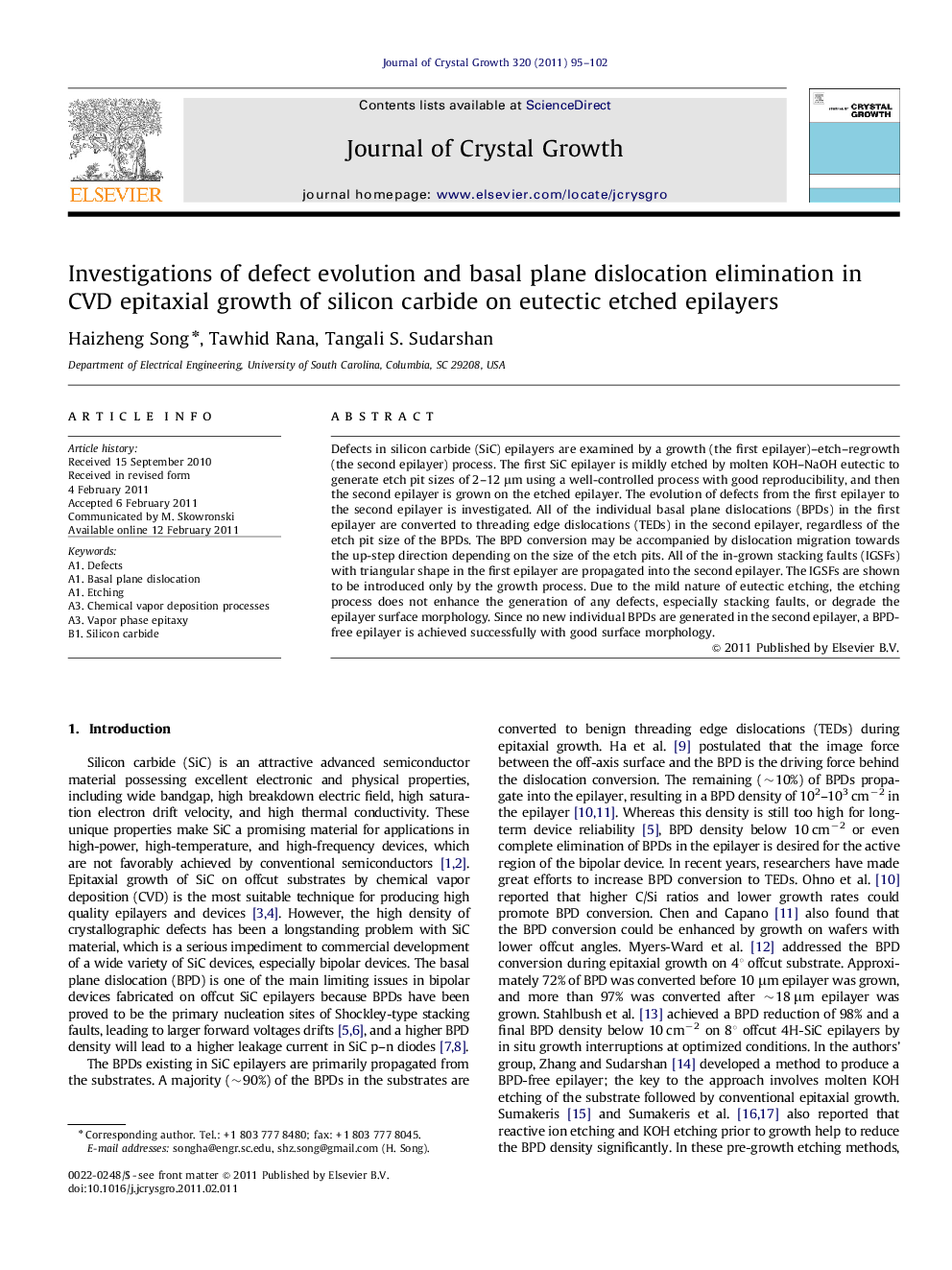| Article ID | Journal | Published Year | Pages | File Type |
|---|---|---|---|---|
| 1792350 | Journal of Crystal Growth | 2011 | 8 Pages |
Defects in silicon carbide (SiC) epilayers are examined by a growth (the first epilayer)–etch–regrowth (the second epilayer) process. The first SiC epilayer is mildly etched by molten KOH–NaOH eutectic to generate etch pit sizes of 2–12 μm using a well-controlled process with good reproducibility, and then the second epilayer is grown on the etched epilayer. The evolution of defects from the first epilayer to the second epilayer is investigated. All of the individual basal plane dislocations (BPDs) in the first epilayer are converted to threading edge dislocations (TEDs) in the second epilayer, regardless of the etch pit size of the BPDs. The BPD conversion may be accompanied by dislocation migration towards the up-step direction depending on the size of the etch pits. All of the in-grown stacking faults (IGSFs) with triangular shape in the first epilayer are propagated into the second epilayer. The IGSFs are shown to be introduced only by the growth process. Due to the mild nature of eutectic etching, the etching process does not enhance the generation of any defects, especially stacking faults, or degrade the epilayer surface morphology. Since no new individual BPDs are generated in the second epilayer, a BPD-free epilayer is achieved successfully with good surface morphology.
